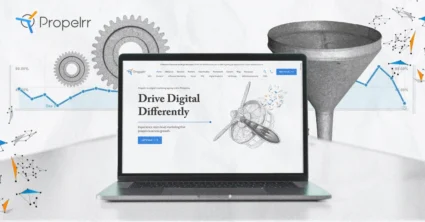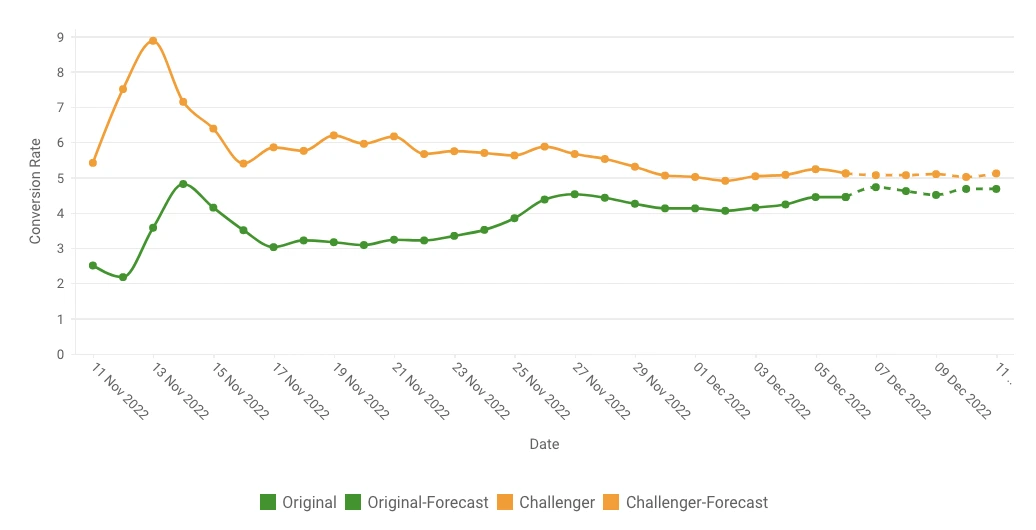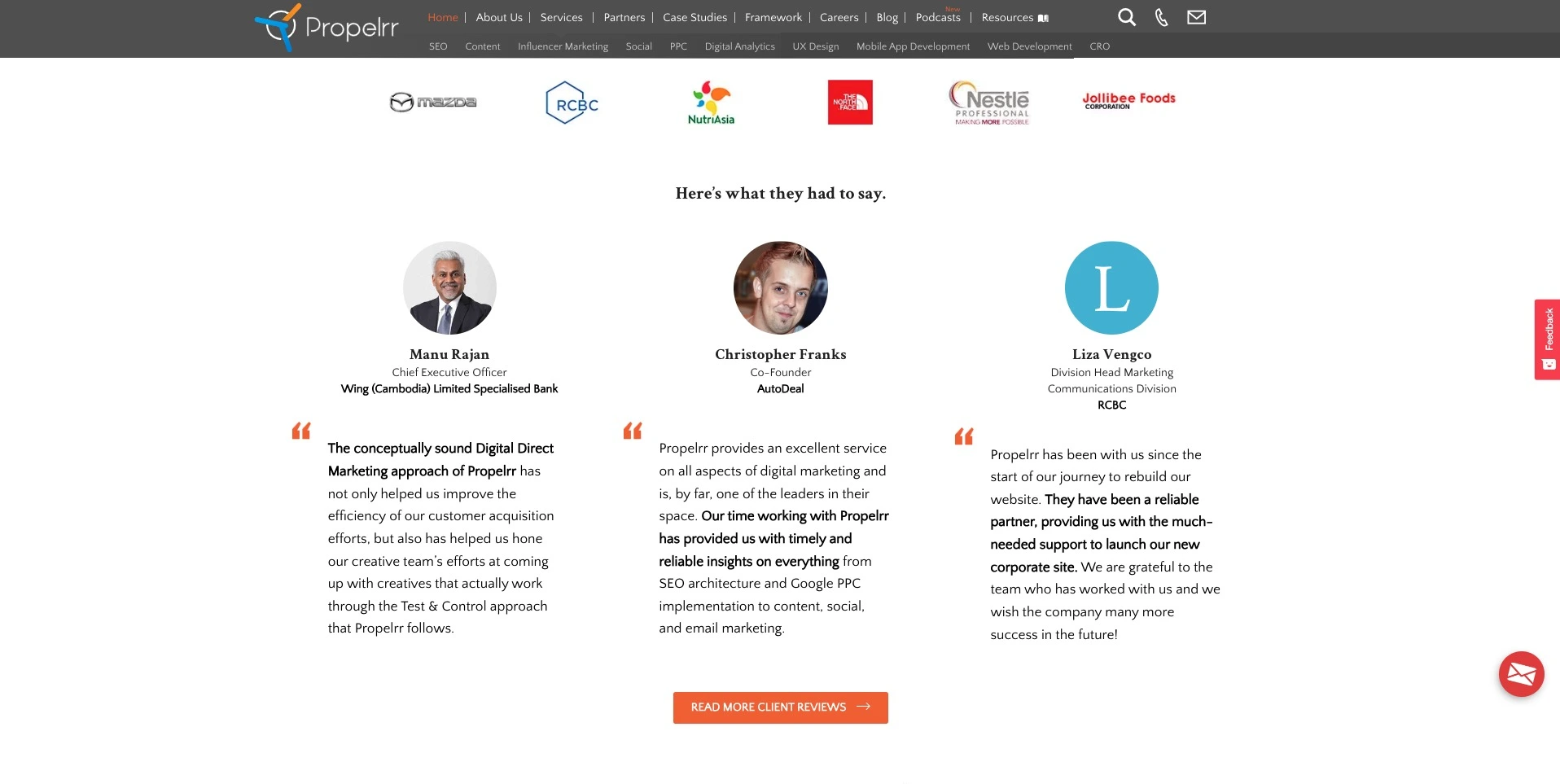6 Easy and Effective Website Conversion Optimization Tips
Author & Editor
Founder & CEO
Published on: Oct 25, 2023 Updated on: May 22, 2024

Table of Contents
Don’t throw in the towel just yet! These six conversion optimization tips might be just what you need.
There is no online marketer worth their salt today that thinks conversion optimization (CO) isn’t important. Believe you us.
That’s because, in the digital age, CO is what’s making the difference between the websites that are just getting high traffic but no leads, and websites that get leads despite the lower traffic. In fact, conversion optimization has been proven to provide one of the fastest and most effective methods for turning your website traffic into paying customers. More critically, it’s what differentiates the companies that scale up in five years (or less) from those that shutter in the same amount of time.
READ FURTHER: Conversion Rate Optimization – 4 Red Flags That Say You Need it
And yet, despite its urgent importance, only half of you really pay attention to CO. Which is fair. There are many barriers to adoption; after all, the primary of which is the knowledge barrier driven by the complexity of CO.
But if you strip it to its bare bones, the complexity all draws down into one simple benefit of CO: It is to make sure that the money you put into lead acquisition doesn’t go to waste. With CO, you can ensure that all that hard work of catching an audience’s attention and getting them to visit your website, ultimately ends up with a sale.
By now, you’ve been on your self-teaching journey of CO long enough to know what conversion optimization is. So, let’s cut to the chase: How do you do it easily and effectively?
Simple website conversion optimization tips
From all that you’ve read about CO, you may have noted that it’s quite a complicated practice. Because conversion optimization synthesizes various digital marketing strategies, it demands that you pay attention to 10, 15, or 20 things on your website all at once.
From a seasoned digital marketing agency, here are a few tips to make it simpler, along with some companion guides for helping you practice the basics of conversion optimization.
Tip 1: Optimize one landing page at a time.
We established this already. In conversion optimization, there are many factors to consider making it quite the confusing task. Hence, to make it simpler, try not to optimize too many pages at the same time when you’re starting out.
While general best practices out there recommend creating more landing pages and testing 10 to 15 of them at a time, many of you simply lack the capacity to do so. And that’s okay. The important thing here is we start with a simple practice of testing just one.
Doing so will help you to: 1) gain a feel of the workflow and develop a steady practice of it without getting overwhelmed, and 2) focus on one optimization project so that you can also track results easily.
COMPANION READ: A Complete Landing Page Checklist For Better Conversion Rates
For this tip, it’s also important to remember that you change and test only one variable at a time. And we point this out because there are many aspects that you can change about a landing page. You can test changes in the call-to-action buttons – would saying ‘BUY NOW’ work better than ‘CHECK OUT NOW’? Or you can test images to use – would lifestyle images work better than product shots, or should you try videos altogether?
We know you have a ton of ideas about what to change. Just don’t get too caught up in wanting to change and test everything simultaneously because, trust us, you’re going to find it hard to track the results later on.
It helps to use a hypothesis prioritization framework to determine your testing priorities and track the progress of ongoing experiments.

Tip 2: A/B test to finetune your conversion funnel.
This tip goes along with the previous one as it tells you how to test changes done to your landing pages.
Once you’ve determined which specific aspects to modify first, you can proceed to comparing the old iteration (control variable) versus the new one (challenger variable) to see which one performs better.
Here’s a sample of the results of these comparisons:

A/B testing is one of the most basic ways you can start testing and, therefore, practice conversion optimization. While there are more sophisticated tools online, they are often pricey. Hence, these are better reserved for when you’ve imbibed a routine for testing and practiced enough to scale up your CO efforts.
Our companion read below provides you with a list of essential tools used in conversion optimization. These contain your basic A/B testing tools and then some.
COMPANION READ: 4 Essential Conversion Rate Optimization Tools Every CO Needs
Tip 3: Improve page speed, improve conversions.
Do you ever wait for a web page to load for more than 10 seconds? No, right? And your customers won’t either. This is the reason why page loading time has one of the strongest impacts to your bottom line.
In fact, Forbes Advisor reported that an estimated 2.6 billion dollars in revenue is lost each year due to sluggish websites.
A slow page is the most potent nullifier of any online marketing and advertising campaign. No matter how visually captivating your ads are, or how convincing your boosted user-generated content is, or how many ads you put out there. If your landing page fails to load, you don’t get a conversion.
Therefore, there is no understating the importance of optimizing your page load time. Get it down to loading as fast as possible – in under five seconds, if you can. In our companion read below, we’ll show you how to do it.
COMPANION READ: Expert Tips on How to Optimize Page Speed From 18 to 2 Secs
To see how fast or slow your page is loading, you can use free tools like GTmetrix, and don’t forget to check load speed for both desktop and mobile browsers.
Tip 4: Design user-friendly forms.
We say user-friendly because, contrary to mainstream best practices, shorter forms don’t always guarantee more conversions. In some cases, longer forms are actually better at capturing leads than shorter ones.
This much was echoed by Venture Harbor, in their article citing five different case studies on the impact of forms on conversions. In it, Venture Harbor’s senior editor emphasized that while short forms often beat longer ones remains a fact, it’s best not to assume that the same logic applies for your business.
He further explains that “how you format these forms to reduce friction and create user incentive” are more important than focusing on length. Incentive aside, this is where user experience (UX) design comes into play. Because its inherent purpose is to remove any and all friction in web and/or mobile landing pages, applying UX design principles for your forms are more likely to help you improve conversions than experimenting with length.
COMPANION READ: User-friendly Form Design Principles for Increased Leads
Tip 5: Gain trust through social proof to encourage conversions.
Various studies investigating the impact of consumer trust on conversions prove the importance of incorporating social proof in your ecommerce sites and landing pages.
Mainly driven by growing mistrust in ecommerce and the prevalence of online scams, audiences are looking for more buy-in (aka reasons to trust your brand) before they complete a purchase. To do this on your ecommerce site and relevant transactional pages, you can incorporate the following:
- Customer testimonials - These are snippets of customer reviews, commonly from decision-makers in organizations you’ve worked with. They are often displayed in transactional pages as quotes with the appropriate identification and photos to prove authenticity. This is especially helpful for people in business-to-business marketing.

When you have clients that you’ve had a good working relationship with, don’t hesitate to request for a testimonial to your work and contributions to their organization.
User-generated content -. This kind of content comes from your satisfied customers. These are often sourced through social media as video reviews or even long-form posts accompaniedTo incorporate these in your landing pages, you can reach out to your customers who posted organically and request for permission to use them – with the appropriate credits, of course. Another thing you can do is to seed them with products or trial periods of your services so that they can create honest reviews that both you and them can publish on your pages.by photos and other media.
Case studies -. These are white papers detailing the proof of results from your product and/or service. Just like the other types of social proof we featured, they are published on your transactional pages hoping to earn the trust of your audiences. The only difference is that these are self-published.
If you have work that has a significant and/or lasting impact for your clients, take the time to write out the process you took to achieve or surpass the intended results. As an example, here’s a conversion optimization case study where we detailed our efforts for one of our clients that are, themselves, struggling with improving website conversions. You can download the case study for free and use it as a reference for developing your own.
Tip 6: Craft personalized and visible call-to-action (CTA) buttons.
You know calls to action (CTAs) are important in any campaign as they drive actions and conversion on their own. But if you want to step up your game for conversions, personalizing those CTAs is one easy way to do it.
An increasing need for contextual relevance that signals your understanding of your audiences have driven the effectiveness of personalized CTAs. In fact, according to call-to-action statistics from HubSpot, they found that these perform 202% better than basic, generic CTAs.
This is especially applicable to your email marketing campaigns. So apart from placement, visibility, and having them in the first place, consider personalizing your CTAs. Below are a few steps to do so:
- Address your recipient by name. Whether you use their full name for formality or just their first name to keep it light and casual, using a name is a first step to getting personal with CTAs. You can address them by name in the email subject line or in your greeting through programmed automations provided by your email marketing platforms.
- Use your data analytics to understand your audience. This is essential to crafting a contextually relevant message for your email campaigns. Through the help of tools like Google Analytics, you can understand your intended audience’s interests, where they are in their buying journey, and/or on what platforms and devices they engage with you.Once you’ve gathered this information, you can craft a personalized message by, for example, citing that they might be interested in your first-time customer discounts if they’re a new visitor on your website (according to analytics).
- Give an offer they can’t refuse. Finally, once you’ve built your story, give them an offer they can’t refuse ie. an offer that matches their needs accurately. Using the same information you gathered from your analytics, you can develop and present an offer for discounts, free trials, or other, depending on what will meet their needs with immediacy.
Let’s say you found out through analytics that you have a lot of events in the form of clicks on an offer for wholesale purchases from a specific set of repeat customers. Through an email campaign you can communicate an offer through a personalized message like:
Hey Ana!
You seem to have been purchasing a lot of our two-ply soft tissue boxes lately. We’re really grateful for the support and so would like to offer you a 20% discount for a wholesale purchase of the same box of two-ply soft tissues.
Just use the code SUPPLEWHOLESALE20 when you reach the checkout page and the discount should apply automatically.
Always thankful for the support,
Jenny Dawson
Product Officer
Supple Care Sanitary Products
Sounds like it’s going to be a successful conversion after Ana reads that email.
Key takeaways
There is no questioning the need for conversion optimization in today’s landscape. With increasing competition and declining customer attention spans, costs of acquiring new customers and retaining existing ones are bleeding businesses dry. Optimizing campaigns for conversions is, at this point, the best strategy to making the most of every penny you invest in campaigns.
With the tips provided above, you should be able to take a step towards practicing CO in as similar a way as possible to the biggest players in your vertical. Apart from the tips above, remember that CO:
- Is a continuous learning process. It doesn’t just end with one successful campaign. In fact, we’d argue that your previous CO effort should still serve as a source of information for how you can improve your next one.
- Provides a path to understanding your customers better. This is actually its inherent purpose. Because the best thing CO will teach you is that your customers are the best source of information when finding out how you can improve your products and/or marketing efforts. Through your practice of CO, various techniques will bring you closer to a true understanding of your customer; use it to not just grow your business in financial terms, but also into a brand that people can love.
- Compounds your growth. Because it builds on top of previously optimized campaigns, CO effectively compounds your growth. So while it certainly is a tedious process, it pays back the effort in continually doubling rewards. Make sure that you’re not just using it for one-off campaigns and consider scaling it for integration into your business operations.
Did you find these tips helpful in making sense of conversion optimization? If not, then feel free to contact us with your questions so we can clarify them as best as we can.
For more tips and updates on our conversion optimization projects, make sure to subscribe to the Propelrr newsletter.
